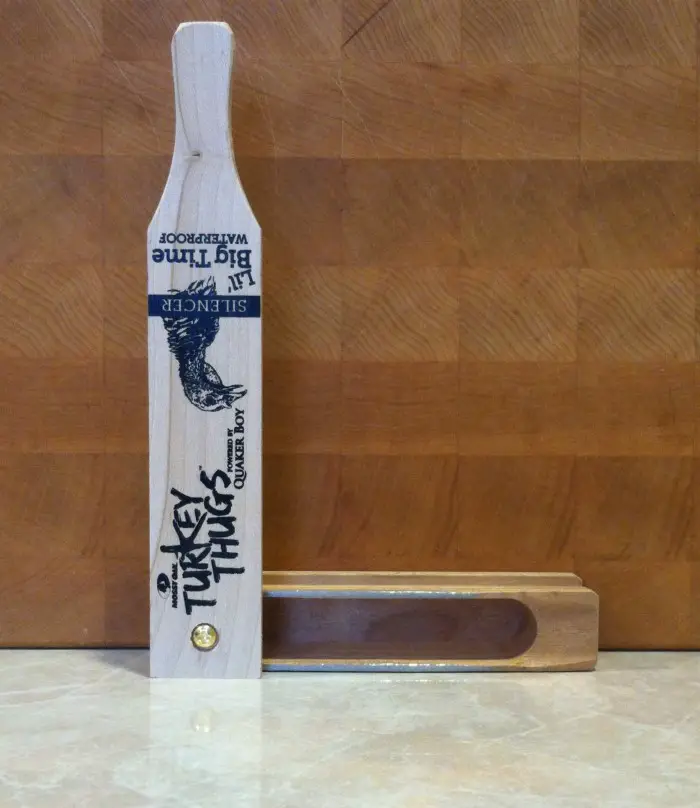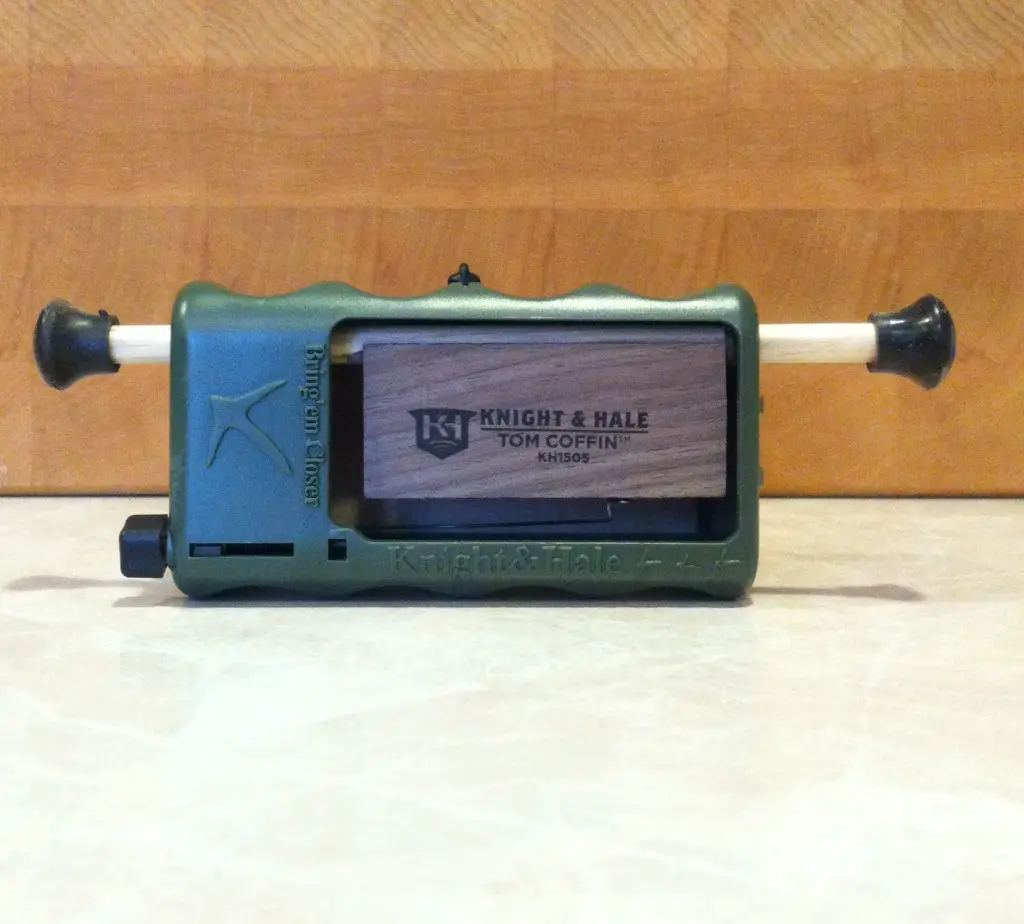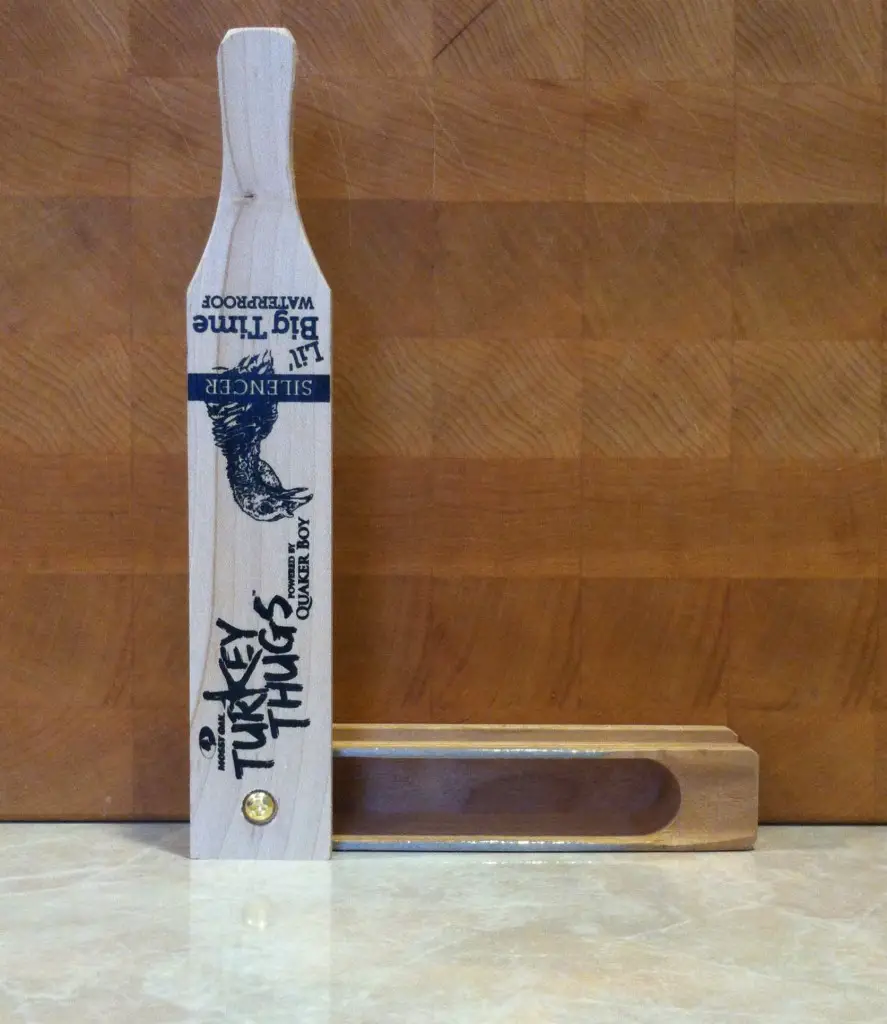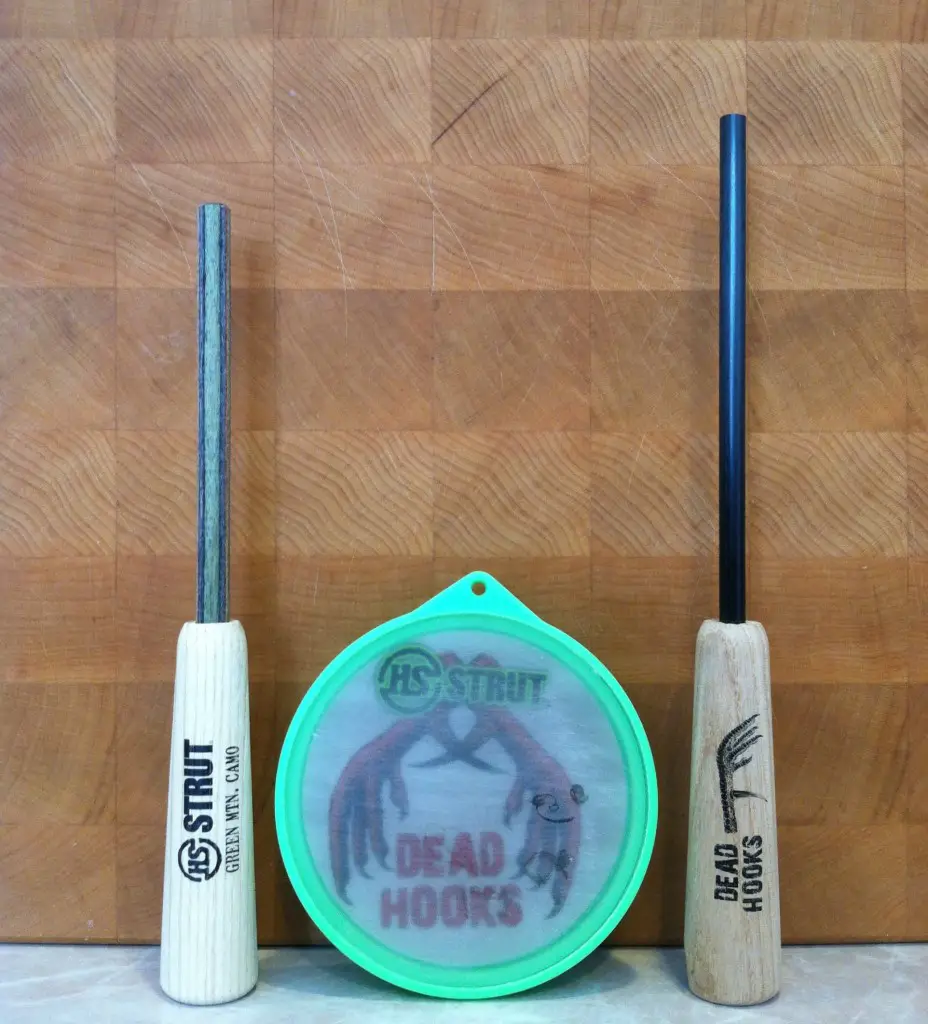As I mentioned in my previous articles on patterning my shotgun, the basics of turkey hunting, and camouflaging my shotgun, I’m in the process of preparing for an upcoming turkey hunt during Memorial Day weekend. For my next article in my series on turkey hunting, I’m writing about the differences between some of the various types of turkey calls commonly used by turkey hunters. Since spring turkey season overlaps with mating season for turkeys in most of the United States, imitating turkey vocalizations is the most popular and most effective technique used by turkey hunters to call in a big gobbler. There are a wide variety of turkey calls available on the market today, and I hope to provide some useful information on the advantages and disadvantages of each in this article.
Before we begin, please note that I’m not necessarily endorsing any particular type or brand of turkey call in this article. Indeed, I haven’t actually used any of them on a turkey hunt yet, so I’m not really in a position to say which type or brand works “best.” Instead, I’m merely presenting some of the pros and cons of each type of call as well as some things to consider when getting ready to purchase one.
Push Button Call
The push button call is probably the easiest turkey call to use. Made from wood (primarily walnut) and/or plastic, push button calls can produce realistic sounds imitating turkey hen clucks, purrs, and yelps. Since they are so easy to use, push button calls are very popular among new turkey hunters. Another advantage of the push button call is that a hunter can also easily operate one with only one hand, or even mount it on the stock of a shotgun for quick and easy access.
Unfortunately, push button turkey calls are very sensitive to moisture. While turkeys will still move during a spring rain shower, a little rain can silence a push button call and ruin a hunt for a hunter who relies solely upon push button calls. Additionally, push button calls can present problems for a hunter going after turkeys subject to heavy hunting pressure. Since they are so popular, and since push button calls do not produce quite as wide of a variety of sounds as other turkey calls (particularly diaphragm or pot and striker calls), mature gobblers may quickly wise up and become less responsive to a hunter using a push button call midway through the season.
Box Call
Like the push button call, the box call is also extremely popular and very easy to use. Box calls are most often made of wood such as walnut, cedar, or mahogany, among others. However, some box calls are now made out of metal. In the hands of a skilled caller, a box call can produce a very wide variety of turkey vocalizations. Additionally, box calls are great for calling over long distances, as they can mimic turkey vocalizations at loud, as well as soft volumes.
Like push button calls, box calls are also sensitive to moisture and don’t work nearly as well when wet. However, this is not as big of a problem as it used to be because some companies now manufacture waterproof box calls (like the call pictured above). Another problem with box calls is that most of them require two hands to operate. This makes it more difficult for a hunter to transition from operating the call to aiming his or her shotgun without being spotted by a sharp eyed gobbler.
Finally, box calls have the same disadvantage as box calls when hunting heavily pressured turkeys. Since they are so popular, turkeys sometimes learn what a box call sounds like and become less responsive to them. Since the goal of a hunter is to sound like a turkey, not a turkey hunter, this can be a problem.
Pot and Striker Call
Pot and striker calls consist of a round disc, usually made from glass, slate, or ceramic materials, and a striker usually made of wood, aluminum, or carbon. To use, apply pressure to the pot with the striker at varying pressures, angles, and patterns to create different sounds. Using these calls, a skilled caller can produce a dizzying array of turkey calls. Additionally, most pot and striker calls are much more tolerant of wet conditions than box or push button calls are.
While pot and striker calls are great options for a turkey hunter, they are not without disadvantages. Like a box call, pot and striker calls have the disadvantage that they require two hands to operate. Additionally, they are more difficult to learn to use effectively when compared to push button calls or box calls.
Diaphragm Call
Also known as mouth calls, diaphragm calls are small, horseshoe shaped calls with rubber or latex reeds that vibrate when air is forced across them. Many different manufacturers produce diaphragm calls in a wide variety of variations that can imitate virtually any turkey vocalization. Diaphragm calls are inexpensive, small, lightweight, and weatherproof. They also do not require the hunter to use his or her hands for operation. This significantly cuts down on movement and allows the hunter to use the call right up until the point that they take the shot without spooking the bird.
The biggest disadvantage to the diaphragm call is that they are the most difficult turkey calls for a hunter to learn how to use properly. Indeed, many experienced and successful turkey hunters do not know how to use a diaphragm call to its fullest potential. The other disadvantage to a diaphragm call is that they are not as loud as other turkey calls, especially box calls.
As you can see, each of the different types of turkey calls I described here fits into a particular niche. None is perfect, but they can complement each other very well if used appropriately. As a result, instead of looking for the “best” call, it’s probably a better idea for a turkey hunter to purchase and master the use of 2-3 different turkey calls. This will give the hunter several options if he or she out in turkey hunting and gets caught in a rain shower or the turkeys stop responding to a particular call. By having a different, but complementary, call on hand that he or she can use well, that hunter may be able to change things up and end the hunt with a big gobbler on the ground.
Make sure you follow The Big Game Hunting Blog on Facebook, Instagram, Twitter, and YouTube.
NEXT: BEST 6.5 CREEDMOOR AMMO FOR HUNTING ELK, DEER, AND OTHER BIG GAME
John McAdams is a proficient blogger, experienced shooter, and long time hunter who has pursued big game in 8 different countries on 3 separate continents. John graduated from the United States Military Academy at West Point and is a veteran of combat tours with the US Army in Iraq & Afghanistan. In addition to founding and writing for The Big Game Hunting Blog, John has written for outdoor publications like Bear Hunting Magazine, The Texas State Rifle Association newsletter, Texas Wildlife Magazine, & Wide Open Spaces. Learn more about John here, read some of John’s most popular articles, and be sure to subscribe to his show: the Big Game Hunting Podcast.






